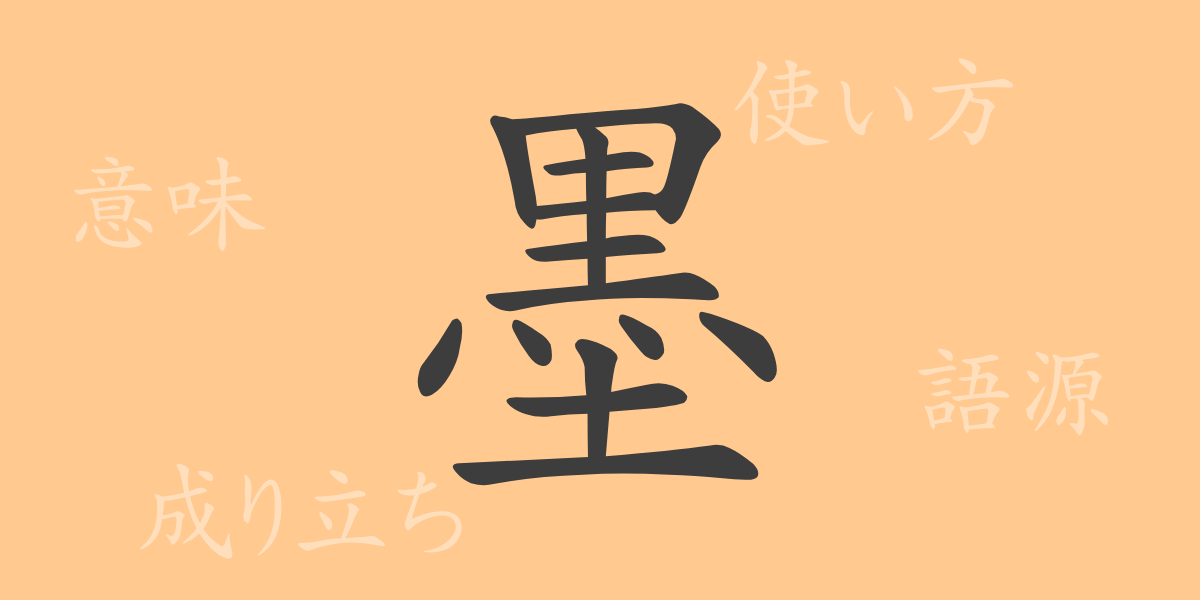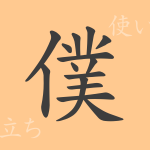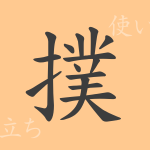The depth of Japanese culture is symbolized by a single character, “墨 (sumi).” This single stroke carries meaning far beyond mere color. In the world of traditional calligraphy, which has been passed down through the ages, each shade of ink conveys emotion. Even today, it is a commonly used character in various contexts. In this article, we will delve into the origins, rich usage, readings, and compound words of “墨 (sumi),” exploring the full scope of this simple yet powerful character.
The Origins (語源) of 墨 (sumi)
The character “墨 (sumi)” originates from ancient China and originally referred to black pigment. Tracing its etymology, the black pigment made by burning earth marks the beginning of “墨 (sumi).” It already existed during China’s Yin Dynasty and later became a significant cultural element with the development of calligraphy. It was introduced to Japan during the Nara period, and since then, it has been deeply rooted in Japanese history and culture as a fundamental tool for expressing calligraphy and as a word referring to the color black.
The Meaning and Usage of 墨 (sumi)
Originally, “墨 (sumi)” referred to the black liquid ink used in calligraphy, but it has also come to mean the color black itself or metaphorically “something extremely black.” Additionally, it can be used as an adjective, as in “墨だらけ (sumi-darake),” which literally means covered in ink but metaphorically can mean “very bad.”
Readings, Stroke Count, and Radical of 墨 (sumi)
Let’s look at the basic information of the commonly used character “墨 (sumi).”
- Readings: In On’yomi (音読み), it is read as “boku,” and in Kun’yomi (訓読み), it is read as “sumi.”
- Stroke Count: The total stroke count for “墨 (sumi)” is 14 strokes.
- Radical: The radical is 土部 (tsuchi-hen).
Compound Words, Idioms, and Proverbs Using 墨 (sumi) and Their Meanings
There are numerous compound words, idioms, and proverbs in Japanese that include “墨 (sumi).” Here are a few examples:
- 墨守 (bokushu) – To adhere to old systems or methods.
- 墨付き (sumitsuki) – Reliable evidence or proof.
- 墨を啜る (sumi o susuru) – To devote oneself to calligraphy.
- 墨を洗う (sumi o arau) – To repent past wrongdoings.
- 一字千金 (ichijisenkin) – A phrase expressing that a single character has immense value, often used in the context of calligraphy involving “墨 (sumi).”
Conclusion on 墨 (sumi)
The single character “墨 (sumi)” encompasses the depth of Japanese culture, starting with the tradition of calligraphy. Its practical aspect as a black pigment and its symbolic meanings seen in various compound words and idioms highlight its wide-ranging usage. Through this article, we hope to unravel its origins and contemporary usage, aiding in the understanding of the multifaceted nature of the commonly used character “墨 (sumi).”

























